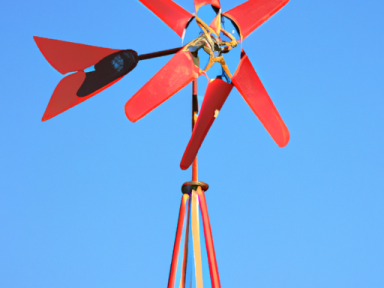
A beginner’s guide to designing and setting up a wind turbine to generate electricity off the grid
Picture this: a sudden power outage leaving you and your family helpless in the dark. No lights, no heating, and worst of all, no way to charge your devices to communicate with the outside world. In a world that relies so heavily on electricity, being without it can leave you vulnerable and disconnected.
But fear not, dear reader! There is a solution to safeguard yourself against such daunting scenarios. By harnessing the power of the wind, you can generate electricity and become self-reliant. In this beginner’s guide, we will walk you through the process of designing and setting up your very own wind turbine to generate electricity off the grid.
Step 1: Assessing your location
The first step in building a wind turbine is to assess the wind resources in your location. You need a steady and consistent wind flow to ensure the effectiveness of your turbine. Research local wind maps or consult an expert to determine the wind speeds in your area. Ideally, you should look for an annual average wind speed of at least 10 miles per hour.
Step 2: Choosing the right turbine size
Once you have determined that your location has suitable wind resources, it’s time to choose the right wind turbine size for your needs. Small wind turbines are classified as those with a capacity of 100 kilowatts or less. Consider your energy requirements and choose a turbine that can meet your electricity needs.
Keep in mind that larger turbines are more efficient in generating electricity but may require more space and be subject to local regulations. It’s important to check zoning regulations, permits, and any height restrictions before proceeding with your wind turbine installation.
Step 3: Designing and installing your wind turbine
Designing and installing a wind turbine requires careful planning and attention to detail. Here are the key steps involved:
- Turbine selection: Choose a reputable manufacturer and select a turbine model that suits your needs.
- Tower height: The height of your tower is crucial for efficient wind capture. Install your turbine high enough to avoid obstructions and turbulence.
- Foundation: Construct a solid foundation to support your tower and ensure stability.
- Assembly: Follow the manufacturer’s instructions to assemble and install your wind turbine properly. This may include connecting the blades, generator, and electrical components.
- Wiring and connections: Connect the turbine to a charge controller, batteries, and an inverter to convert the DC power generated into usable AC power.
- Maintenance: Regularly inspect your turbine for any wear and tear, and perform necessary maintenance to ensure its optimal performance.
Step 4: Maximizing your wind turbine’s efficiency
To maximize the efficiency of your wind turbine and ensure a constant power supply, there are a few additional steps you can take:
- Proper placement: Position your turbine in an area with unobstructed wind flow, away from large trees or buildings that could block the wind.
- Regular maintenance: Clean the blades regularly to remove any dirt or debris that may hinder their performance. Inspect the tower and wiring for any damage or loose connections.
- Optimize battery storage: Invest in high-quality batteries and maintain proper battery storage to maximize the amount of electricity you can store for later use.
- Backup power: While wind turbines can provide a reliable source of electricity, it’s always wise to have a backup power source (such as a generator) in case of prolonged calm wind conditions.
By following these steps and considering the factors mentioned, you can design and set up a wind turbine that will provide you with a reliable source of electricity off the grid. Remember, being self-reliant means preparing for the unexpected. Don’t let the fear of a power outage paralyze you – take action and start your wind turbine project today!



GIPHY App Key not set. Please check settings